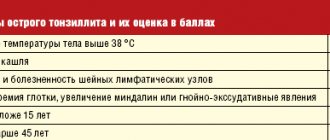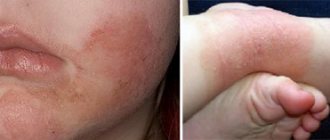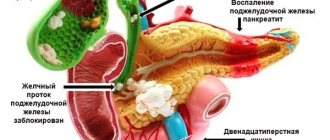The article was prepared by a specialist for informational purposes only. We urge you not to self-medicate. When the first symptoms appear, consult a doctor.
Giardia in the liver is a protozoal invasion, which is provoked by protozoan microorganisms. The disease is characterized by disorders of the digestive functions. Abdominal pain, stool problems, and flatulence come to the fore. In parallel, the development of allergic, neurotic and hepatolienal syndrome is possible.
Once in the human gastrointestinal tract, these single-celled organisms trigger a cycle of active reproduction. In adults, Giardia infestation is more reminiscent of the symptoms of pathology of the liver and biliary tract. However, signs of giardiasis will not always be present. It has been established that out of 40% of sick people, clinical manifestations of invasion are observed in only 20%.
Giardiasis is widespread. Statistics indicate that in developed countries the number of adults with giardiasis ranges from 3 to 5%, and in developing countries from 10 to 15%. Most parasitologists are confident that the real number of patients is much higher, which is associated with the high probability of an asymptomatic course of the invasion in adulthood.
Symptoms of the disease
In healthy people, even with a small amount of Giardia in the body, enzymes and acids of the gastrointestinal tract destroy harmful microorganisms, preventing protozoa from multiplying in the lumen of the duodenum. Therefore, invasion usually occurs against the background of dysbiosis, or inflammatory diseases in the stomach and gall bladder. Putrefactive and dyspeptic processes in the intestines caused by long-term use of antibiotics also contribute to the disease.
Giardiasis is a polymorphic disease, that is, it can manifest itself in three different clinical forms, which can occur immediately or succeed each other.
The disease can manifest itself:
- Asymptomatic carriage;
- Intestinal form with spread to other organs;
- Hepatic form (only the liver is affected);
- They will join against the background of weakening of the body in immunodeficiency states.
Activity of the patient’s relatives, opinions of independent specialists
An important, but not always openly discussed, element of the planning and course of treatment is the activity of relatives, their possible influence on helping or, conversely, hindering the doctor’s work. In the described case, additional consultations were informally carried out by the patient's relatives. All the specialists they attracted provided advisory assistance, according to relatives, disinterestedly, having become interested in the clinical case and the materials provided to their attention. Initially, an oral comment (second opinion) was received regarding the MRI images from a radiologist at one of the private medical centers in Rostov-on-Don, who suggested multifocal hepatocellular cancer. The third opinion, also oral, came from a radiologist at one of the leading government institutions in another region: he questioned the likelihood of cancer, but did not form an exact opinion. Further, also informally, the relatives held consultations with leading local specialists in the field of hepatology (by telephone) and surgery (in person, with analysis of MRI images, see Fig. 1). Their opinions boiled down to the fact that since the patient does not have hepatitis C, liver cancer at this age is doubtful and that the formations visible on MRI images are of an unclear nature, but most likely not oncological, but infectious. They also emphasized the high risk to the patient’s life in the event of a puncture, which exceeds the diagnostic value of the results obtained in this way. In addition, features that should be taken into account during the diagnostic search were noted: the patient has an appetite, a craving for a protein diet, redness of the tongue.
Intestinal form
Initially, the small intestine is affected, where Giardia begins to actively divide and attach to the walls of the small intestine, provoking its inflammation. Parasites also mechanically close the intestinal villi, preventing beneficial substances and vitamins from being absorbed into the blood, which worsens the patient’s condition. The occurrence of inflammation initiates the first symptoms:
Bloating- Diarrhea
- Foamy stool
- Belching and heartburn
- Discomfort
- Feeling of fullness in the stomach
- Constant pain in the navel area
Giardia waste products, which they synthesize in increased quantities, can lead to allergization of the body and local atopic reactions (urticaria, contact dermatitis). Although minor manifestations of allergies occur in 40-50% of patients with giardiasis, in some patients (especially those with an increased immune reaction), the risk of Quincke's edema and even anaphylactic shock increases significantly.
Danger of illness
Giardia is very dangerous for the body because:
- their metabolism releases toxins that leak into the blood and begin to poison all cells,
- disrupt the production and activity of enzymes, which leads to disruption of the digestive process,
- disrupt fat metabolism,
- create lactose deficiency, which increases the concentration of milk carbohydrates. As a result, the patient suffers from loose stools and increased gas formation,
- disrupt the absorption of digestive substances in the intestines, which leads to exhaustion of the body.
Each of the above disorders can cause more serious illnesses. The patient's immunity decreases and he becomes less resistant to infectious diseases. Chronic fatigue develops, causing impotence and depression. To avoid these unpleasant situations, it is recommended to immediately consult a doctor at the first signs of giardiasis.
Complications
The consequences of giardiasis are divided as:
- Specific (this is an allergy in the form of urticaria, Quincke's edema, damage to the eyes (ophthalmopathy), joints (arthritis)).
- General (immunodeficiency, exhaustion).
The presence of parasites in the liver can lead to the development of complications such as:
- cholecystitis;
- cholangitis;
- pancreatitis;
- hepatitis;
- abscess;
- sepsis.
Children are at risk of developing bronchial asthma and atopic dermatitis. Although these diseases do not always have a direct connection with giardiasis, the parasitic infection creates a favorable background for the worsening of the condition. The occurrence of intestinal dysbiosis in patients of different age groups is also characteristic.
Hepatic form
Symptoms of the appearance of Giardia in the liver are similar to those of cholecystitis and other diseases of the hepato-biliary system.
The disease manifests itself:
- Pain in the right hypochondrium
- Nausea
- Vomiting
- Taste of bile in the mouth
- Flatulence
Also, half of the patients develop a pronounced asthenic syndrome in the form of: increased fatigue, apathy, and decreased appetite.
Giardia in the liver in children causes severe pain, which prevails over dyspeptic symptoms. Possible manifestations from the pancreas in the form of severe girdle pain and vomiting. With a prolonged course of giardiasis, children become irritable, whiny, their sleep is disturbed, and they often have headaches.
In adults, these symptoms also occur, but they are not too pronounced, since the presence of Giardia in the liver does not affect the main functions of the organ, causing clinical manifestations mainly from the gallbladder.
Classification
Depending on the type of pathological process, giardiasis can be acute or chronic. The disease can also occur in the following forms: asymptomatic carriage, subclinical variant, established (manifest) variant. Experts also distinguish three variants of giardiasis depending on the clinical manifestations:
- intestinal. Characterized by the development of duodenitis, gastroesophageal reflux, enteritis, intestinal disorder;
- extraintestinal. Astheno-neurotic syndrome develops, and toxic-allergic symptoms also appear;
- biliary-pancreatic. Biliary dyskinesia, cholecystitis and acute reactive pancreatitis appear.
Giardiasis practically never occurs in children with strong immune systems.
Transmission routes
Giardia is the simplest single-celled organism that primarily lives in water, so the peak incidence occurs in the summer, when infection occurs when swimming in polluted waters.
The source of the disease and the main carrier are people with giardiasis, who excrete up to 20 million parasite cysts with one gram of feces.
Animals, such as pets (cats, dogs, guinea pigs, or rabbits), can also be carriers of the infection.
The main routes of transmission of infection are:
- water,
- food,
- contact-household.
Infection is possible by consuming poorly processed, unwashed, or fresh foods, since Giardia cysts remain on the surface of vegetables and fruits for up to two days from the moment of watering with contaminated water.
In children's institutions, for example in kindergartens, where contact transmission is common. Giardia can be found in toys, furniture, hands of teachers and cooks, surfaces of cribs and toilets.
It is possible to defeat parasites!
Antiparasitic Complex® - Reliable and safe removal of parasites in 21 days!
- The composition includes only natural ingredients;
- Does not cause side effects;
- Absolutely safe;
- Protects the liver, heart, lungs, stomach, skin from parasites;
- Removes waste products of parasites from the body.
- Effectively destroys most types of helminths in 21 days.
There is now a preferential program for free packaging. Read expert opinion.
Read further:
Treatment of worms in children at home: the best folk recipes for self-medication
Treatment of Giardia with folk remedies in adults and children, recipes
Giardia cysts: what they look like, treatment and tests, what to do if there are Giardia cysts in the stool
How to get rid of roundworms at home using tablets and folk recipes
How to treat Giardia in a child from 2 to 15 years old: with medication and folk remedies
How to quickly get rid of lamblia for adults and children with the help of medicines and folk remedies
Diagnostics
So giardiasis can have various manifestations; during examination, pay attention to:
- Often recurrent gastritis, cholecystitis, duodenitis.
- Disorders of the nervous system in the form of increased weakness, irritability and headaches.
- Sudden allergic manifestations due to gastrointestinal disorders.
- Increased eosinophils in the blood (a sign of parasitic infestation).
To make a diagnosis, laboratory methods are mainly used, which, in addition to determining nonspecific immunoglobulins E in a general blood test, allow the isolation and identification of the pathogen.
Protozoological research
If the above symptoms occur, the therapist prescribes an examination of fecal smears, in which they look for Giardia cysts. However, given the cyclical nature of protozoan release into the environment, it is recommended to carry out multiple tests even with initial negative results. Typically, repeat smears are taken every week for a month, but parasites can be detected during the first sample. Also, this study is carried out in children's institutions (kindergartens and primary schools).
The duodenal contents are examined, where Giardia is found more often than in feces. The sampling is carried out using a special probe.
Antigenic diagnostics
As with any foreign agent, in response to the appearance of signs of parasites, the body begins to secrete antibodies, the presence of which can be checked in the blood. Venous blood is taken on an empty stomach in the morning and then examined in the laboratory.
Already from the second week of the disease, IgM can be detected, which reflect a recently begun process. Over time, their number rapidly decreases, giving way to immunoglobulins G, which persist for up to six months (even after recovery).
Antigenic diagnostics does not exclude false-positive tests, as well as reactions to other parasites (for example, amoebas).
How to detect Giardia in the liver
Since the symptoms of infection have many diverse symptoms that are similar to the clinical picture of the development of other diseases, it is necessary to consult a doctor to make an accurate diagnosis.
The specialist will examine the patient and prescribe certain diagnostic procedures:
- examination of stool and blood;
- abdominal ultrasound;
- serological tests;
- PCR tests, ELISA.
It is impossible to self-medicate without an accurate diagnosis. This will not only aggravate the problem, but will also negatively affect the further process of treatment and recovery. Self-medication can cause irreversible consequences.
Treatment
In a prolonged form, the main role is played by repeated infection (autoinvasion), without which the body itself eliminates the parasites within three to four weeks.
Treatment is usually carried out in a hospital, where the spread of infection and further bacterial elimination are prevented. Even after discharge from the hospital, the patient’s condition is monitored for 2-3 weeks, since protozoa can turn into cysts and not respond to drugs. The decisive criterion for deregistering a patient is a repeated negative laboratory stool test.
Drug treatment
The main therapy is etiotropic. The drug of choice is metronidazole and its derivatives, which are prescribed in a weekly course. Also, among broad-spectrum antibiotics, paromomycin, a group of aminoglycosides, helps well, which has good rates of eliminating liver invasions.
For the treatment of lamblia in the liver in children, furazolidone is used (0.1 g 4 times a day). To eliminate allergization, suprastin and diazolin are prescribed.
Tinidazole, which is used for diseases caused by protozoa, shows high effectiveness. Take a weekly course 3-4 times a day.
Choleretic drugs are added, for example, derivatives of ursodeoxycholic acid - urosan, or urochol, which also have a hepatoprotective effect.
If the treatment does not give the predicted results, a second course of therapy is carried out after 5 days with a change in medications.
After treatment is completed, vitamins B and C are added to the rehabilitation therapy.
ethnoscience
Home remedies cannot replace drug therapy, but they can speed up the healing and recovery processes of the body.
Flax seeds are added to porridges, desserts, and meat dishes, as they have a good effect on the stomach and intestines, relieving inflammation. They also enhance the outflow of bile, preventing Giardia from infecting the wall of the ducts.
Milk thistle infusion, like flax seeds, promotes the removal of bile and is also a strong hepatoprotector.
Pumpkin seeds contain powerful natural antioxidants - vitamins E, A and C. They restore the lost balance of metabolism in the liver and actively participate in its regeneration.
Sauerkraut brine, which also contains many vitamins and microelements, is effective for eliminating lamblia. Unlike most drugs, it has no contraindications or side effects at moderate dosages.
As a dessert, it is recommended to use natural coconut pulp, which contains large amounts of vitamin B6 and helps restore damaged liver functions.
Diet
As with other liver diseases, treatment table number 5 and fractional meals are recommended.
The amount of salt, coarse fiber and vegetable fats is reduced. The main preference is given to boiled and stewed dishes. They also slightly reduce the amount of carbohydrates in the diet, leaving solid cereals and vegetable soups.
During the day, it is important to maintain water and electrolyte balance and replenish lost fluid reserves. The daily water intake can reach up to 2.5 liters.
You should avoid foods rich in cholesterol, such as pork, lamb and butter, replacing them with unsaturated fatty acids, in particular omega-3 and omega-6. They are found in avocados, fish oil, seafood, salmon and are natural hepatoprotectors.
Corn, mushrooms, sorrel, and legumes are excluded from vegetables, as they can cause bloating and discomfort.
Dairy products are recommended in limited quantities to avoid fermentation processes in the intestines.
Despite the fact that the diet limits the diet, the daily amount of calories should not be less than 2000 kcal for women and 2500 kcal for men.
Vasilenko V.V. Giardiasis is seriously scary / www.gastroscan.ru. 2022
| Authors: Vasilenko V.V. |
Giardiasis is seriously scary
The material was prepared with the help of I. Kovalkova. Does the form with the results of the analysis, where Giardia is recorded in your child’s feces, prevent you from falling asleep at night?
Are you afraid of the serious treatment of this “illness”? Or have you been “treating” your child for these protozoa for several years without success? Then, first, you should clearly define what is meant by such a generalized medical concept as “giardiasis.” Does your child have characteristic signs of this disease or is everything limited to the presence of Giardia cysts in his stool?
The fact is that diagnosing giardiasis solely by stool analysis, paradoxically, is completely unfounded.
There are many medicines in medicine, but only the doctor’s skill can make them bring benefit. author unknown
What is Giardia?
First, a little lie.
It is generally accepted that Giardia is a parasite that can cause cholecystitis, and if it starts in the liver (scary to say!) - cirrhosis, and if the intestines are damaged - regular pain. In addition, they may cause nausea, vomiting, and everything in general.
A little history.
This simplest creature - a link in the evolution between bacteria and multicellular organisms - was described in 1681 by Leeuwenhoek, who observed it through a microscope he himself constructed and, not being a doctor or biologist, aptly called it an animacula (small animal). Dr. F. Lamblia from Prague (and not the Russian scientist D.F. Lambliy, as some believe) gave it a different name - cercomonas intestinalis, and Steels in 1915 renamed it in honor of F. Lamble and the Parisian professor A. Giardia as giardia lamblia. Nowadays it is more correct to call this flagellated protozoan “giardia intestinal” - giardia intestinalis (according to the proposal of the International Commission on Zoological Nomenclature).
Leeuwenhoek looked into the eyepiece of a simple microscope, and in turn, an animacula looked at him - a ghost-like creature, the size of which was slightly more than two times larger than a red blood cell - an erythrocyte (Fig. 16).
This is who Leeuwenhoek
Ris saw through his microscope.
16. Giardia lamblia Now, in continuation of the big truth. ... Small intestinal giardias are certainly parasites, but they are not particularly destructive compared to, for example, worms. They do not live at all in the gallbladder and bile ducts: once they get into the bile, they die immediately. Why should they cause cholecystitis?
The likelihood of liver cirrhosis in owners of Giardia is equal to the possibility of its occurrence in owners of lice, birthmarks and simply non-owners. Giardia cannot also cause severe disorders of the biliary system (cholecystocholangitis).
Everything is poison, and nothing is without poison;
Just one dose makes the poison invisible. Paracelsus Until now, official medicine has not published any cause-and-effect relationship between the presence of Giardia in humans and serious liver diseases, and the assumptions about the existence of this connection by individual doctors are nothing more than their personal opinion or “sacred tradition.”
It would be interesting to know: if bile is destructive for Giardia, how do they manage to harm the liver so much?
Finally, we got to the only organ in which these simple flagellates live - the small intestine.
Typically, giardiasis manifests itself as a simple parasite carriage, but there are also obvious forms - mainly in the form of disruption of intestinal activity. In these cases, the disease begins acutely 1–2 weeks after infection with fatty and loose stools (which can last up to three days) and sometimes pain in the epigastric region. This type of giardiasis does not cause complications. The prognosis is usually favorable.
Medicus amicus et servus aegrotorum est. — The doctor is the friend and servant of the sick.
Is it giardiasis?
Obviously, the source of knowledge about the presence of Giardia in your child, naturally, was stool tests.
The only question is what was the reason for the examination - quite possibly, one of the following circumstances. >
- The child has periodic abdominal pain, sometimes does not feel well, and spontaneous vomiting occurs.
With such symptoms, most likely there are problems with the digestive tract or with the nervous system (the same psychological situation!).
It is advisable to consult a good doctor, who will determine the true cause of the ailment, and not attribute everything to Giardia in the feces.
- Your pediatrician advised you to get tested for Giardia, since the child looks “thin”, although he has a good appetite, and you have no other complaints.
If we suspect giardiasis in every healthy child, thin or, as our grandmothers said, “lean” in build, then with the same reason we should suspect a congenital metabolic disorder in all plump children. Some are thin, others are plump, some are tall, some are short - children simply have different appetites, each of them has a unique gene set, some are athletic and active, others prefer a more measured pace of life.
All this is reflected in their constitution. Of course, the main indicator that everything is in order is the child’s good health and normal development, and raising suspicions based on the general impression and one’s own ideas about what a healthy child “should” look like is, to say the least, not entirely correct.
- You yourself decided to get tested for prevention, since the child has a habit of biting his nails, digging in the ground (sand), sucking a pencil, etc.
Prevention is, of course, a necessary thing, if by it we mean hardening the child, good nutrition, sufficient exposure to fresh air and observing basic hygiene measures, and not at all the habit of donating blood, urine or feces (as in this case) for tests “just in case.” case” - you see, they’ll find something. Absolutely, you will do more harm to your child than good if you live in anticipation of some kind of illness.
- The child has problems with the biliary system, and the doctor, unsuccessfully trying to cope with them, decided that giardiasis was to blame
(by the way, the most popular hypothesis after “bends of the gallbladder”).
They don’t live in the gallbladder, they don’t! Even with duodenal intubation, when Giardia is removed from the duodenum, they are often in a very poor condition. And there’s nothing to say about the gallbladder! Draw a parallel between the two simple premises given above, and you will come to a simple conclusion that there cannot be living Giardia in the gallbladder bile.
- The child suffers from frequent acute respiratory diseases, colds, etc., and the doctor recommended a stool test for giardiasis.
It can be assumed that when sending for analysis, a complex scheme was implied in which Giardia harms the intestines and directly or indirectly leads to a weakened immune system.
If Giardia had such an effect on the protective processes in the body, immunologists, not pediatricians, would take them seriously. In this situation, Giardia doesn’t even have anything else to attach to. The severity of the disease (giardiasis) has nothing to do with immunity: it is known that in patients with immunodeficiency syndrome, giardiasis does not worsen and does not transform into threatening forms. This indicates that our immune system is absolutely indifferent to them, or at least does not consider Giardia to be its enemies.
In addition, Giardia does not produce toxins.
Medicine can do more than it knows. F. Bacon
- Attacks of “acetonemic vomiting” in a child, possible provocateurs of which are Giardia.
Not a single serious medical book has covered this issue.
Why then invent this dependence for those who do not write or read these books? Treatment must be based on scientific facts, and not on shaky assumptions. And know what periodic vomiting syndrome, which was described above, is.
- The child has skin problems, and you attribute their causes to problems in the digestive tract.
The skin is the diocese of dermatologists, and you can turn to them.
However, not to those who suggest starting a search for harmless Giardia. Remember, even if you undergo the necessary treatment and eradicate these protozoa from yourself, this will not guarantee a solution to your skin problems.
Nevertheless, it is likely that after taking strong antibacterial drugs there will be an improvement, since through the blood these drugs act on various pathogens directly in the skin. And Giardia has nothing to do with it.
Philosophers deserve the title of anatomists more than doctors: they open, but do not heal. A. Rivarol
As you can see, none of the points has absolutely nothing to do with lamblia itself.
Is it worth fighting flagellar “monsters”?
In North America, where they know how to count money, two main positions compete with regard to Giardia in children. The first is that it should not be treated if there are no outbreaks of acute gastroenteritis in children's groups, the second is that it should not be treated at all, since this will not reduce the level of morbidity (and infection).
In principle, Giardia does not cause a person any particular inconvenience. Almost 30% of the world's inhabitants are their latent carriers. Many people don’t even know about it - at least until doctors start to panic. For some reason, some doctors have the habit of “chasing Giardia” for various disorders, although the only officially recognized disease that occurs when there is an excess of Giardia in the duodenum is Giardia enteropathy.
By the way, this disease is characterized as diarrhea, which usually goes away on its own within a few days.
And the wise Voltaire doubted the toxicity of coffee. Kozma Prutkov
According to infectious disease specialists and epidemiologists, giardiasis can be suspected when diarrhea appears, especially in children, without pronounced manifestations of general intoxication in the absence of mucus and blood in the stool. Until the mid-1960s, the question that Giardia can cause weak stools generally remained controversial: researchers were confused by the colossal predominance of asymptomatic Giardia carriers among those examined.
To be fair, it is worth noting that chronic giardiasis enteritis also occurs, but the reason for its chronicity has not yet been sufficiently studied.
More precisely, it cannot be called enteritis (inflammation of the intestines), because there is no inflammation.
Of course, if you wish, you can remove Giardia from the body. If you still set this goal, then first study the annotations of such drugs as, for example, trichopolum (metronidazole), tiberal (ornidazole) and furazolidone.
And if you don’t get the impression that you are “shooting sparrows with a cannon” when using such therapy for simple parasite carriers, then in this case you can only be glad that you are not a doctor and therefore would not recommend this to others.
I am sure that the principle of rational drug treatment in pediatric gastroenterology is the rule: the absence of a compelling indication is a contraindication to prescribing the drug.
V.V. Vasilenko. Sixty essays on digestion (recommendations from a gastroenterologist to patients) Back to section
Prevention
The following are most susceptible to giardiasis:
- Children
- Preschool workers
- Persons with immunodeficiency
These categories must undergo timely examination and hospitalization if the disease is detected.
City sanitary units are required to check water bodies and soil for the presence of parasitic cysts, especially in the summer, when the risk of disease increases. You should also not drink unfiltered water or water from unverified sources. When visiting hot countries, you should not eat unwashed fruits or swim in prohibited bodies of water.
Children should have preventive conversations and monitor compliance with personal hygiene rules. At the first signs of the disease, it is necessary to contact an infectious disease specialist to establish a diagnosis and prescribe therapy.
Stool analysis
We have already discussed the simplest and most widely available method of detecting parasites above. This is a stool analysis that can detect not only cysts, but also the vegetative form of microorganisms. You cannot use an enema to take the test. A special diet is not required, but the medical staff does not recommend that the patient eat foods containing a lot of fiber, liver in any form, a day or two before donating the biomaterial, since fragments of this food in the feces make it difficult to detect Giardia. Also, 10-14 days before the study you need to stop taking antibiotics and sorbents.
If the patient has undergone intestinal examinations using barium, the procedure for collecting biomaterial for lamblia is postponed for 5-7 days.
Duodenal sounding
This method may be ineffective if Giardia parasitizes only in the middle or distal parts of the small intestinal tract. In other cases, the study of a duodenal sample demonstrates better effectiveness than the study of feces. To collect secretory fluid, a special three-channel probe is used, which is inserted into the patient’s duodenum. A specimen is obtained under vacuum conditions and examined under a microscope. Vegetative forms of Giardia can be detected in biomaterial already during the first analysis. However, this method is quite painful. It is not used to diagnose children.
Horseradish
A medicine made from horseradish roots will also help. To prepare it, you need to take 3 roots of the plant, thoroughly brush off the soil, and do not peel off the peel. Cut them into small pieces and place them in a 2-liter container. Fill the container with clean, cool water, close tightly and leave in the room for three days. Then pour out the water, wash the horseradish roots, chop them, add bee honey to them in a 1:1 ratio. Mix the ingredients thoroughly until smooth and leave for another 4 days. The container with horseradish and honey must be shaken 2 times a day. Take a tablespoon before meals.










